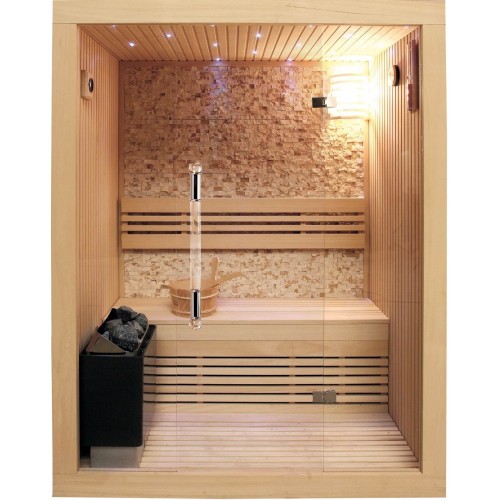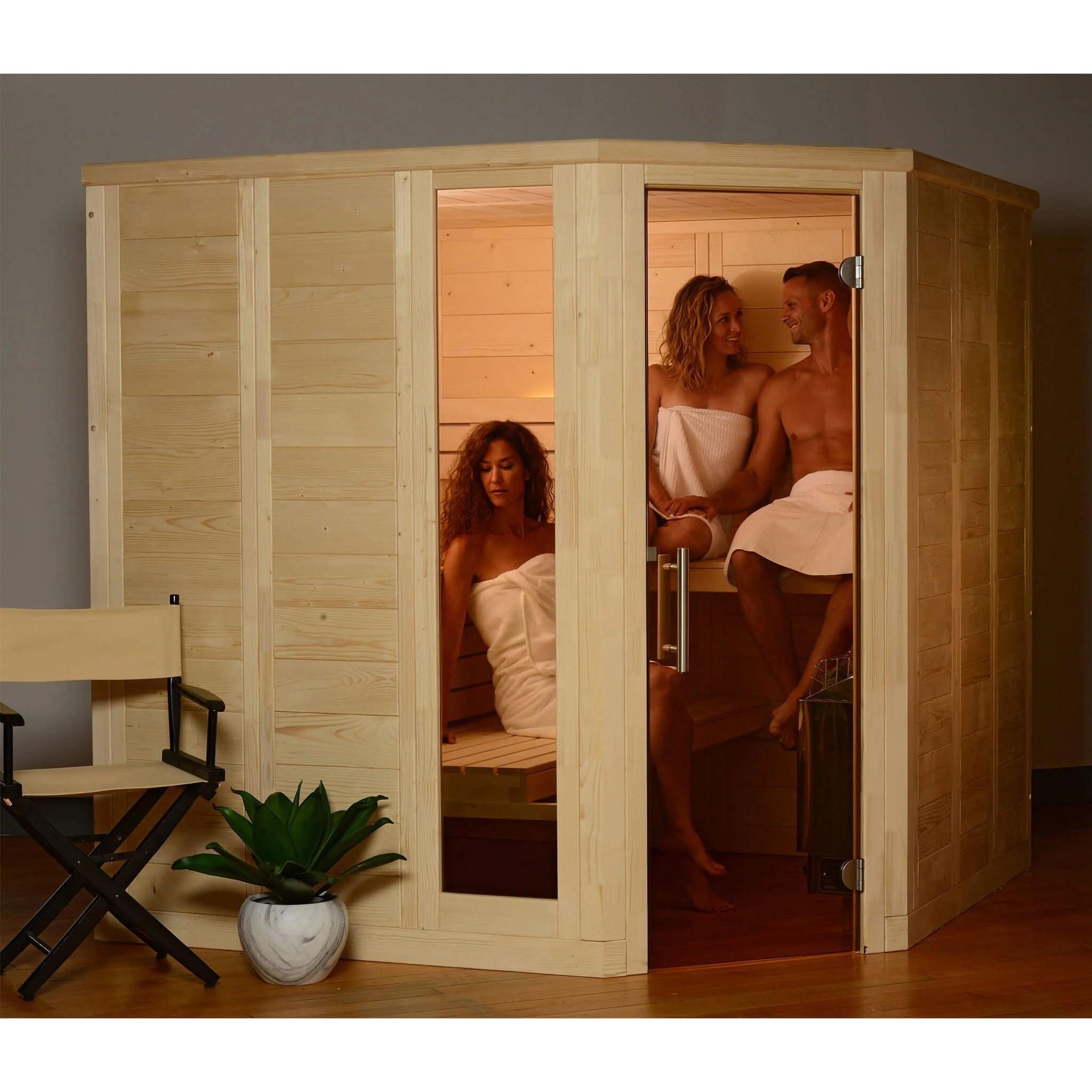The Basic Principles Of Traditional Sauna
The Basic Principles Of Traditional Sauna
Blog Article
Not known Factual Statements About Traditional Sauna
Table of ContentsTraditional Sauna Can Be Fun For EveryoneAll about Traditional SaunaThe smart Trick of Traditional Sauna That Nobody is Talking AboutHow Traditional Sauna can Save You Time, Stress, and Money.Traditional Sauna Things To Know Before You Get This
A lot of the weight lost in a sauna is water loss and is re-gained upon rehydrating. Without a question sauna can be a vital component of a healthy and balanced weight loss program. To look at the differences in between typical and IR saunas, I will certainly separate these into proven, academic, and fabricated differences.Thus, the most popular factor in the saunawhich is at the ceiling directly over the sauna heateris generally in between 185 and 190 F. Claims that a standard sauna goes beyond 200 F is merely not true and not relevant for electric saunas offered in the US. The temperature for a far-infrared sauna is usually set in between 120 and 140 F; nevertheless, unlike the traditional sauna, the goal in and IR area is not to attain a heat.
Since of this, the temperature level difference is practically unimportant, because excessive sweating causes both sauna types, however the technique of heating the body is various. In an IR sauna the bather will certainly really feel hot and will certainly sweat profusely, yet at much lower temperatures (Traditional Sauna). Hence, if the goal is to invest longer durations of time in the sauna, the IR sauna is a good option
When a standard sauna has actually been correctly warmed, the sauna walls are cozy, the air temperature level has achieved set temperature and the rocks are incredibly heated. As an intriguing side note, the heated wall surfaces and the rocks are emitting far-infrared warm, incorporated with the heated air, to produce an "covering warm".
Getting My Traditional Sauna To Work

When the high temperature level is accomplished, the components cycle on and off to maintain the high temperature level. Many traditional sauna users take pleasure in pouring water over the rocks to develop steam to raise sauna humidity degrees. The advantages of pouring water over the rocks consist of: making the area much more comfortable, moistening the nasal passages, and permitting the use of aromatherapy by mixing essential oils with the water.

When the energy goes into the body, it triggers the body temperature level to boost and ultimately results in perspiration. In an infrared sauna it's crucial for the emitters/heaters to remain on practically regularly. Given that there is no mass of rocks to preserve warmth, the sauna will cool if the emitters turned off.
As pointed out above, the sauna bather in an infrared area wishes to position himself before operating emitters to get maximum benefit from the heat. The home heating time for both areas can be really various, depending on how the areas are used. For a conventional sauna, a bather needs to enable 30-40 minutes for the space to accomplish a desired temperature and to effectively pre-heat the rocks.
Not known Facts About Traditional Sauna
A well created sauna will normally achieve a temperature of 150-160 F in concerning 30-40 mins. For hotter temperature levels, the room might require to heat for a longer period.

Conventional saunas tend to be larger (hence make use of more electrical energy) than infrared saunas, although standard saunas are certainly readily available in one and two person sizes as well. For check it out a two-person traditional sauna, 5x6 or 5x7 size is most popular. The top bench can comfortably seat 2 or 3 people and is additionally long enough to relax throughout the sauna session.
The Definitive Guide for Traditional Sauna
The typical expense per kWH of electrical energy in the U.S. is approximately $0.11, so a 4.5 kW heating unit will certainly cost roughly $.50 to compete one hour, if the heating system runs continually for one hour. Generally a sauna heating system will compete 75% of the very first hour and 50% of subsequent hours on since the components cycle once the set temperature is achieved.

There is a seldom reviewed distinction in the social experience between the 2 areas. While our society has actually lost some of the social advantage of the typical sauna experience, it can be really socially satisfying (Traditional Sauna). From family time in the sauna, to heart-felt discussions with better halves, to sauna partiesthe typical Click Here sauna experience can result in intimate interacting socially
Excitement About Traditional Sauna
Most higher end infrared areas important link include tinted light treatment, sound systems and full-glass fronts.
Report this page